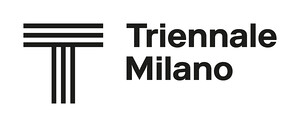The permanent collection of Italian Design, Museo del Design Italiano, directed by Joseph Grima, opens its doors on April 8, 2019 at Triennale Milano. For the first time, the museum presents a permanent display of the most iconic and representative pieces of Italian design, selected from the 1,600 items in the Triennale Collection. The creation of the Museo del Design Italiano has been made possible by the support of the Italian Ministry of Cultural Heritage and Activities.
The aim of the Museo del Design Italiano is to engage and enliven the Triennale’s permanent collection of Italian design, while working to make the institution an important international center for design. Through their innovative technology and forms, their aesthetic qualities and experimental nature, these objects collectively create a narrative about Italian design—past, present and future.
The creation of this permanent display has been advocated by Stefano Boeri, President of Triennale Milano, and by Triennale Milano’s boards and is the result of the input from an advisory committee that brings together some of the top names in the world of Italian design and architecture: Paola Antonelli, Mario Bellini, Andrea Branzi, Antonio Citterio, Michele De Lucchi, Piero Lissoni, Claudio Luti, Fabio Novembre, and Patricia Urquiola. A dedicated special committee will oversee targeted acquisition policies that will add to the permanent collection in the coming years.
In Stefano Boeri’s words: “The opening of the Museo del Design Italiano is the first stage of a broader long-term project. One aim is to expand the Triennale collection by means of targeted acquisition policies and to enter into new partnerships with archives, companies, schools, universities, and museums. Another is to start thinking about expanding the spaces of Triennale in order to give adequate room to the great history of Italian design and to make the institution an important international center devoted to this discipline.”
The expansion project will involve a call for applications for an international design competition in two stages, which will be launched by May 2019. The extension will include new exhibition spaces where the entire collection can be put on display simultaniously, as well as areas for public services and for reorganising the archives, with a total area of 6,000 square meters.
The permanent collection is located in the curved space on the ground floor of the Palazzo dell’Arte, a space of about 1,300 square meters. The 200 objects currently on display, selected from the Triennale’s permanent collection of over 1,600 pieces, tell the story of thirty years of radical experimentation in which new materials, new techniques and new aesthetic codes revolutionised the established order within the domestic sphere and beyond. The museum spans from 1946 to 1981, one of the periods of greatest influence of Italian designers, from the postwar boom years of the 1950s, through to the early ‘80s, when the arrival of fresh, exuberant currents such as Memphis spelled the beginning of a new era of heightened internationalism in design production, in Italy and elsewhere.
The objects are in chronological order, with corresponding information about the history of each one and the context in which it was designed, with many previously unexhibited materials from the Triennale Archives, including photographs, advertising campaigns, and original packagings. In some cases, items are shown together with the wooden models made by master model maker Giovanni Sacchi—on loan to Triennale Milano from Regione Lombardia—to illustrate the evolution of the design, from the study and development stage through to its creation and production.
“Even more than a place where the historical memory of Italian design is preserved and protected,” says Joseph Grima, “the Museo del Design Italiano aspires to be a place of inspiration, in the most ancient sense of the word ‘museum.’ The most intense and influential forms of inspiration often do not come from inanimate objects but rather from the voices of those who created them, and from the stories behind apparently mundane details that led to decisions of fundamental importance for the history of design. With this in mind, we have decided to include the voices of some of those who created the works on show. They have been asked to explain, in a simple, direct manner, the cultural conditions to which each creation responded, and what it was that gave rise to their objects.”
What is peculiar about these interviews is that they were all carried out over the phone, taking inspiration from the words of Vico Magistretti: “I like concept design, the kind which is so clear you do not need to draw it. I have passed on plenty of my projects over the phone.” To give visitors greater information about the context in which the works were created, a timeline runs along the walls of the curve, illustrating historic, political, cultural, and social events in Italy and around the world.
This initial phase of the Museo del Design Italiano is an important starting point for the creation of a project that intends to strengthen and consolidate the role of Milan as the global capital of industrial design.



